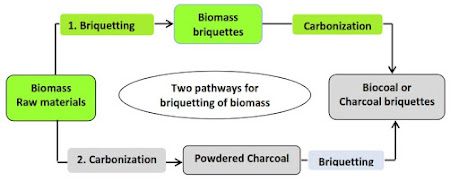"Eat and graze your animals. Verily in this, there are signs of the power of Allah for those who understand. "(Qur'an, 20:54)
"Muslims are syirkah (sharia business cooperation) to three things, in terms of pasture (land), water and fire (energy)". (HR. Sunan Abu Daud).
Sheep farming with the integration of energy plantation for the production of charcoal briquette is an attractive and ideal combination. This is because the sheep farm will produce dung that can fertilize the energy plantation, while the leaves waste from the energy plantation can be an additional feed for the sheep farm. In addition charcoal briquette produced also to cook or roast the lamb meat. This happens if the sheep are exported to the markets of Saudi Arabia, Turkey and the Middle East, as well as the charcoal briquette. Saudi Arabia, Turkey and the Middle East really like lamb and become their favorite food and charcoal briquette as fuel for processing it by burning or baking like satay, more details can be read here.
Calliandra is a type of fast-rotating plant, so it only takes 1 year and can be harvested from wood and can be harvested every year without having to replant it every year. This is because the calliandra is a coppice plant that can grow again from the rest of the stem. The wood from the calliandra plantation is for the production of charcoal briquette. Honey bee farms can also be made in the energy plantation. Calliandra flowers are a source of high quality honey, so the price is also expensive. This honey bee farm is an additional attractive business unit for sheep farming and the production of charcoal briquette.








No comments:
Post a Comment